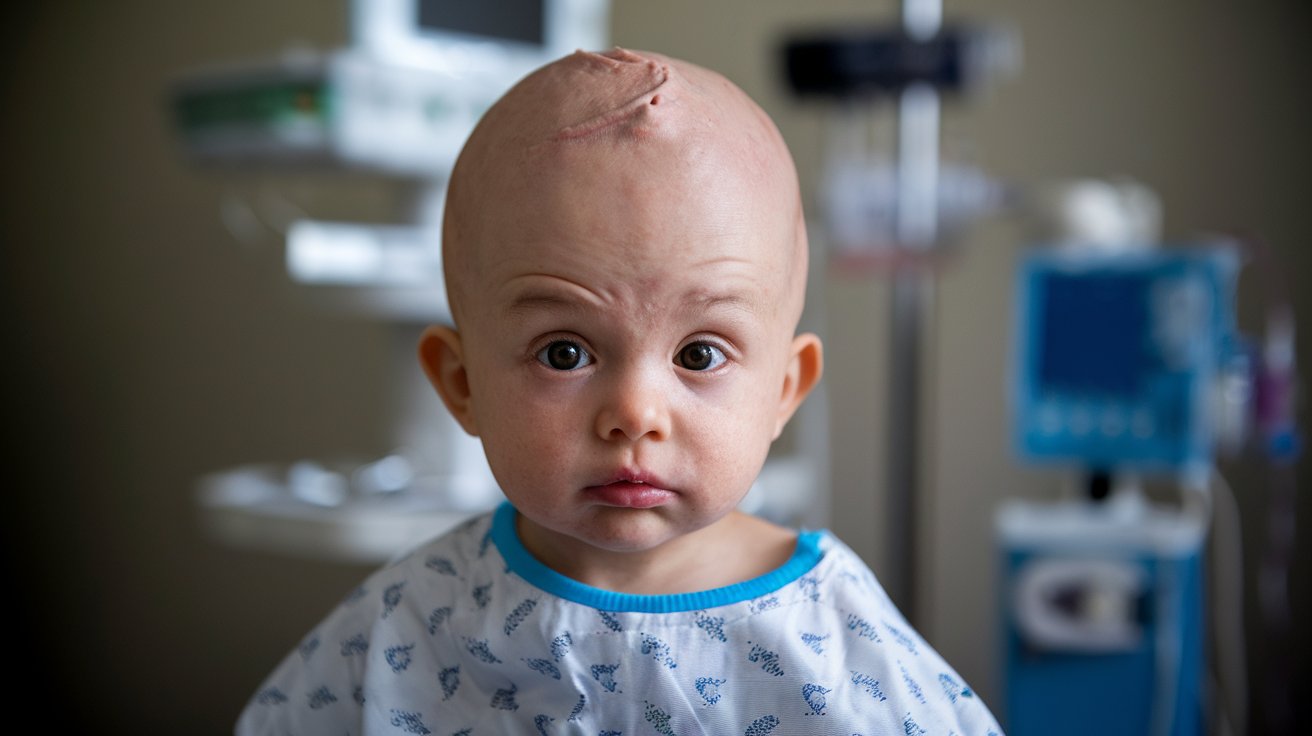
Craniotelencephalic Dysplasia might sound like a mouthful, but understanding it can be simpler than you think. This rare genetic disorder affects the development of the skull and brain, leading to unique challenges for those diagnosed. What causes Craniotelencephalic Dysplasia? Mutations in the FGFR2 gene are the primary culprits. These mutations disrupt normal bone growth, resulting in abnormal skull shapes and brain development issues. Symptoms can vary widely, from mild to severe, including craniofacial abnormalities, developmental delays, and neurological problems. Early diagnosis and intervention can significantly improve the quality of life for individuals with this condition. In this post, we'll dive into 30 fascinating facts about Craniotelencephalic Dysplasia, shedding light on its causes, symptoms, and management strategies. Whether you're a curious reader or someone seeking more information, this guide aims to provide valuable insights into this complex disorder.
Key Takeaways:
- Craniotelencephalic dysplasia is a rare genetic disorder affecting skull and brain development, leading to physical and neurological symptoms. Early diagnosis and multidisciplinary care are crucial for managing the condition effectively.
- While there is no cure for craniotelencephalic dysplasia, treatments such as surgery, therapy, and support programs can help manage symptoms and improve quality of life for individuals living with the condition.
What is Craniotelencephalic Dysplasia?
Craniotelencephalic dysplasia is a rare genetic disorder affecting the development of the skull and brain. Understanding this condition can help in recognizing its symptoms and managing its effects.
- Craniotelencephalic dysplasia is a congenital disorder, meaning it is present at birth.
- The condition primarily affects the skull and brain development, leading to various physical and neurological symptoms.
- Genetic mutations are the root cause of craniotelencephalic dysplasia, often involving specific genes responsible for skull and brain formation.
- This disorder is extremely rare, with only a few documented cases worldwide.
- Symptoms can vary widely but often include abnormal head shape, developmental delays, and intellectual disabilities.
- Craniosynostosis, the premature fusion of skull bones, is a common feature of craniotelencephalic dysplasia.
- Microcephaly, a condition where the head is smaller than normal, is often observed in affected individuals.
- Seizures are a frequent neurological symptom associated with this disorder.
- Hydrocephalus, an accumulation of fluid in the brain, can occur in some cases.
- Facial abnormalities such as a high forehead, wide-set eyes, and a flat nasal bridge are common physical traits.
Diagnosis and Genetic Testing
Diagnosing craniotelencephalic dysplasia involves a combination of clinical evaluation, imaging studies, and genetic testing. Early diagnosis is crucial for managing the condition effectively.
- Prenatal ultrasound can sometimes detect abnormalities in the skull and brain, suggesting the presence of craniotelencephalic dysplasia.
- MRI and CT scans are used to visualize the brain and skull structures in detail.
- Genetic testing can confirm the diagnosis by identifying mutations in specific genes.
- Family history plays a significant role, as the disorder can be inherited in an autosomal recessive manner.
- Amniocentesis and chorionic villus sampling are prenatal tests that can detect genetic mutations associated with the disorder.
- Multidisciplinary approach involving neurologists, geneticists, and radiologists is often required for accurate diagnosis.
Treatment and Management
While there is no cure for craniotelencephalic dysplasia, various treatments can help manage symptoms and improve quality of life.
- Surgical intervention may be necessary to correct craniosynostosis and relieve pressure on the brain.
- Shunt placement can help manage hydrocephalus by draining excess fluid from the brain.
- Antiepileptic medications are used to control seizures.
- Physical therapy and occupational therapy can aid in improving motor skills and daily functioning.
- Speech therapy may be beneficial for individuals with communication difficulties.
- Special education programs can support children with intellectual disabilities.
- Regular monitoring by a team of specialists is essential to address emerging symptoms and complications.
Living with Craniotelencephalic Dysplasia
Living with craniotelencephalic dysplasia presents unique challenges, but with proper support and care, individuals can lead fulfilling lives.
- Support groups and online communities provide valuable resources and emotional support for families.
- Early intervention programs can significantly improve developmental outcomes.
- Adaptive equipment such as wheelchairs and communication devices can enhance independence.
- Nutritional support may be necessary for individuals with feeding difficulties.
- Regular follow-ups with healthcare providers ensure timely management of health issues.
- Genetic counseling is recommended for families to understand the risks of recurrence in future pregnancies.
- Awareness and advocacy efforts are crucial in promoting research and improving care for those affected by craniotelencephalic dysplasia.
Final Thoughts on Craniotelencephalic Dysplasia
Craniotelencephalic dysplasia, though rare, offers a fascinating glimpse into the complexities of human genetics and development. Understanding this condition helps medical professionals provide better care and support for affected individuals. Awareness and research are crucial for early diagnosis and treatment, improving the quality of life for those impacted.
By shedding light on this condition, we can foster empathy and support for families navigating these challenges. Continued research and advancements in medical science hold promise for more effective treatments and interventions.
Remember, knowledge is power. The more we learn about conditions like craniotelencephalic dysplasia, the better equipped we are to make a difference. Stay curious, stay informed, and never underestimate the impact of awareness and education.
Frequently Asked Questions
Was this page helpful?
Our commitment to delivering trustworthy and engaging content is at the heart of what we do. Each fact on our site is contributed by real users like you, bringing a wealth of diverse insights and information. To ensure the highest standards of accuracy and reliability, our dedicated editors meticulously review each submission. This process guarantees that the facts we share are not only fascinating but also credible. Trust in our commitment to quality and authenticity as you explore and learn with us.
